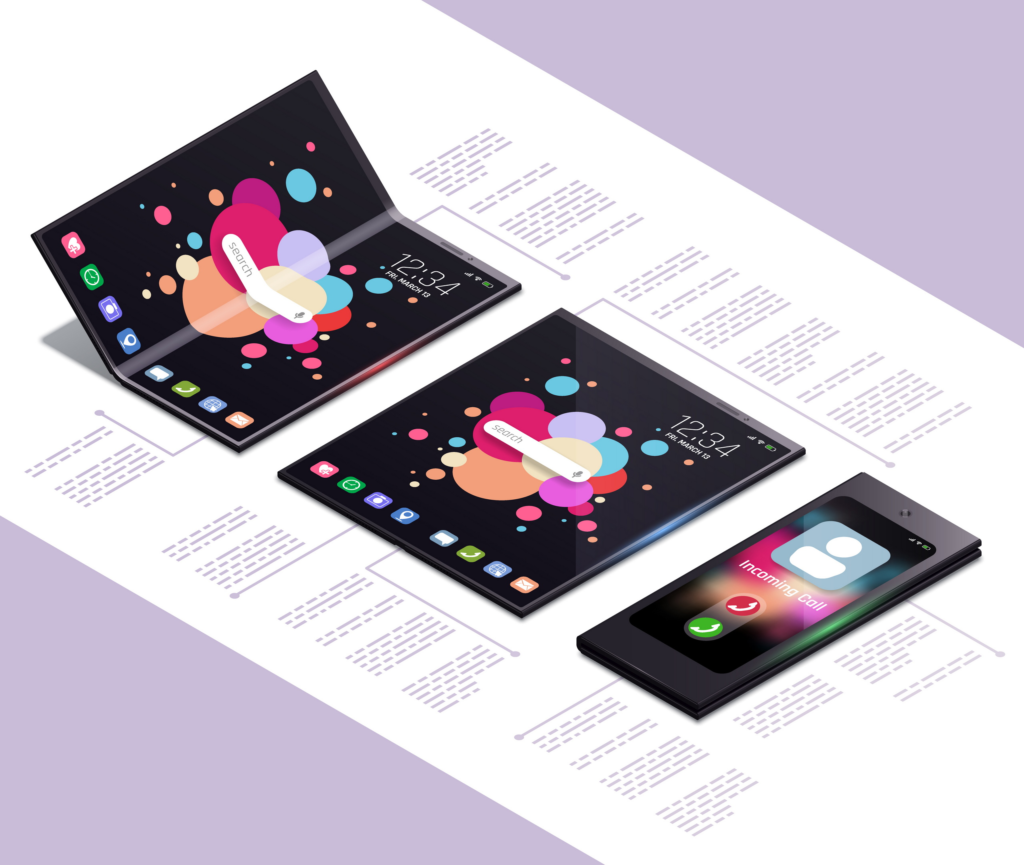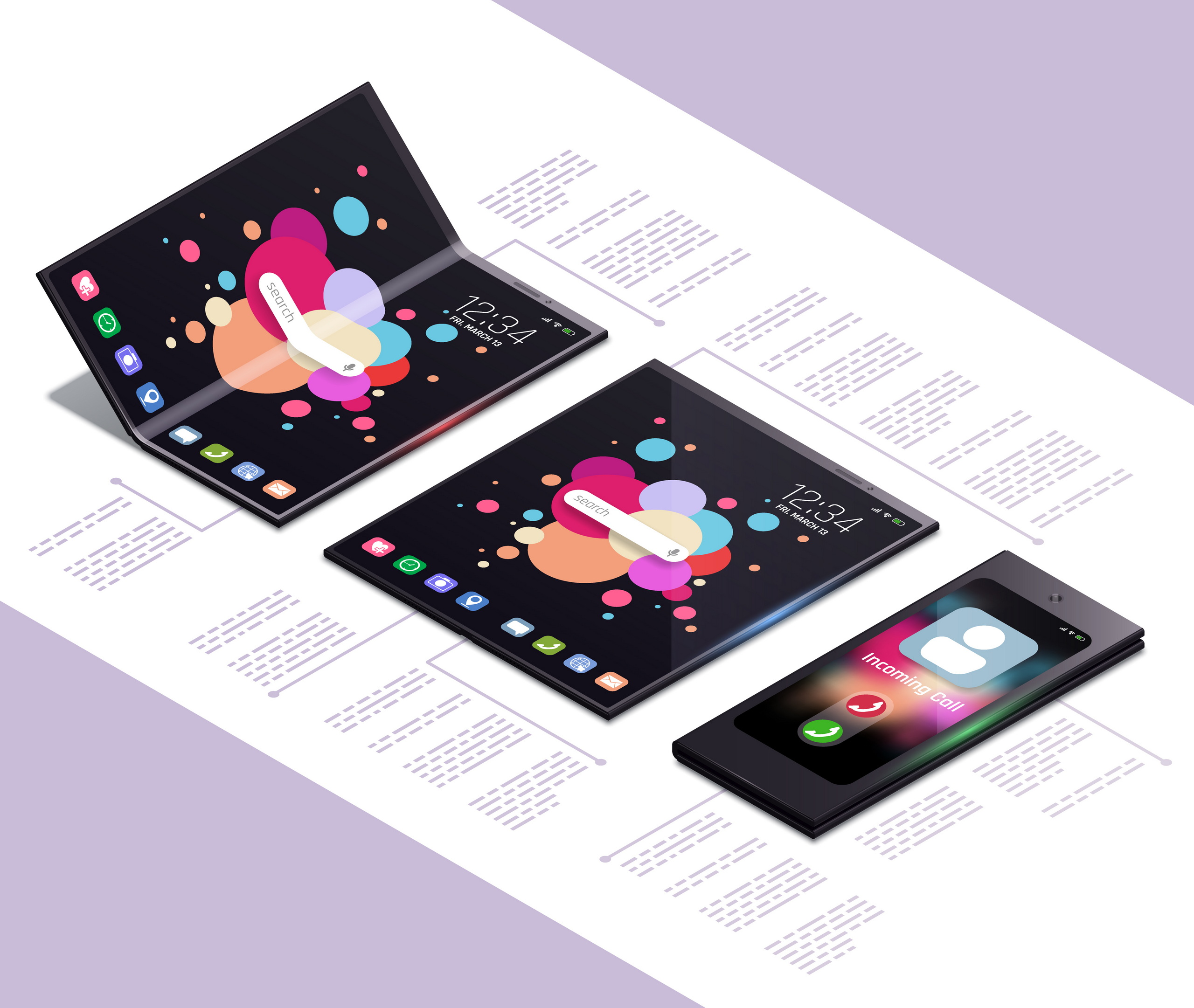The Rise of Foldable Phone App Development: What Business Owners Need to Know

The Rise of Foldable Phone App Development: What Business Owners Need to Know
Introduction: A New Chapter in Mobile Technology
Mobile phones have always been at the center of digital innovation. From the early flip phones of the 2000s to the powerful smartphones of today, each era has opened new opportunities for businesses to connect with their customers. Now, a new revolution is unfolding—literally.
Foldable smartphones, once seen as futuristic concepts, are rapidly gaining traction in the consumer market. Industry giants like Samsung, Huawei, and Google have all launched foldable devices, and the global market is projected to grow from 19 million units in 2022 to over 100 million units by 2027 (IDC report).
For business owners, this isn’t just about shiny new gadgets. It’s about anticipating shifts in user behavior, designing for immersive experiences, and gaining a competitive advantage. Just like businesses that optimized early for mobile apps in the late 2000s reaped huge rewards, those who adapt to foldables today will be positioned as innovators tomorrow.
Why Foldable Phones Matter for Businesses
Foldable phones aren’t just larger screens—they represent a new category of user interaction. Their impact is already visible in:
- Multitasking & Productivity: Users can run multiple apps side by side, boosting demand for apps optimized for split-screen use.
- Immersive Experiences: Larger screens enhance media, gaming, and shopping experiences.
- Seamless Transitions: Apps need to adapt fluidly between folded (compact) and unfolded (expanded) modes.
For example, a retail app on a foldable phone can let customers browse in compact mode while on the go, then unfold the screen at home to view products in rich detail—almost like having a mobile catalog and a tablet in one device.
This adaptability creates new engagement opportunities for businesses in e-commerce, finance, healthcare, travel, and beyond.
Real-World Examples of Foldable App Innovation
Several forward-thinking companies are already experimenting with foldable optimization.
- Samsung’s Partnerships with App Developers
Samsung has worked with Netflix, Microsoft, and Spotify to ensure seamless transitions across foldable modes. For instance, Microsoft Office apps on the Galaxy Z Fold allow users to view a document and an email side by side, turning the device into a pocket-sized workstation. - Banking Apps
Some banks in Asia have updated their mobile apps for foldables, enabling customers to manage multiple accounts on split-screen—making financial management more intuitive. - E-commerce and Retail
Imagine browsing a product on Amazon in folded mode, then unfolding the screen to watch a 360-degree product demo or live AR try-on. Early experiments are already showing higher engagement on foldables because of this “two-in-one” experience.
These case studies highlight a key insight: companies that adapt early are already benefiting from higher engagement and customer satisfaction.
The Business Opportunity in Foldable App Development
For business owners, the rise of foldables isn’t just a tech trend—it’s a strategic business opportunity.
Here are some advantages of investing in foldable-ready apps:
- First-Mover Advantage: Just like businesses that were early to mobile apps or responsive websites, early adopters of foldable optimization can set themselves apart.
- Enhanced User Experience: Apps that adapt to foldables offer smoother, more premium interactions—perfect for industries like luxury retail, real estate, or healthcare.
- Customer Loyalty: Delivering next-level mobile experiences builds stronger trust with tech-savvy consumers.
- Revenue Potential: Foldables enable immersive product showcases, interactive ads, and innovative shopping journeys—all of which can increase conversion rates.
The Challenges Businesses Must Overcome
Of course, opportunities come with challenges. Developing for foldables requires addressing unique technical and design hurdles:
- Adaptive Design
Apps must look and feel seamless whether the phone is folded, partially folded, or fully open. This demands more sophisticated UX/UI strategies than standard smartphones. - Multi-Window Optimization
Many foldables allow multiple apps to run at once. Business apps must perform reliably in split-screen mode without crashes or slowdowns. - Testing & Compatibility
With different manufacturers (Samsung, Huawei, Google, Oppo) offering varying screen ratios and folding mechanisms, testing becomes more complex. - Cost & Resources
Foldable-ready development may require additional investment in design, testing, and QA. However, the long-term ROI can outweigh the initial costs.
Industry Data: Why Now Is the Right Time
Business owners often ask, “Should I really invest in this now, or wait until the market matures?” Let’s look at the data:
- Samsung’s Galaxy Z Fold 4 and Flip 4 sales doubled year-over-year in 2022, showing increasing consumer adoption.
- IDC projects the foldable smartphone market will grow at a CAGR of 38.7% through 2027, outpacing the growth of traditional smartphones.
- Surveys show 64% of consumers are more likely to use foldables for shopping, gaming, and streaming media—all areas where businesses can drive revenue.
The trend is clear: foldables are not a passing fad. They’re becoming mainstream, and businesses that wait risk being left behind.
Future Outlook: Foldables + Emerging Tech
Foldables will not evolve in isolation—they’ll intersect with other emerging technologies:
- AI-Powered Apps: Foldables provide the screen real estate for AI-driven dashboards and personalization.
- Augmented Reality (AR): Retailers could offer richer AR experiences with larger unfolded screens.
- Metaverse & Web3: Foldables may act as mobile gateways to immersive 3D environments.
- Enterprise Use Cases: In industries like logistics, healthcare, and real estate, foldables can become productivity powerhouses.
For example, a real estate agent could unfold their phone to give clients an interactive property tour on the spot, blending AR with detailed listings.
Practical Guidance for Business Owners
If you’re considering foldable app development, here’s a roadmap to get started:
- Evaluate Your Audience
Do your customers tend to be early tech adopters? If so, foldable optimization could be a major differentiator. - Start with Responsive Design
Ensure your app or website already performs well across multiple screen sizes—this is the foundation. - Identify High-Value Features
Focus on features that benefit from a larger screen—such as product visualization, dashboards, or multi-step forms. - Partner with Experts
Work with a digital agency experienced in foldable app development and cross-device optimization. - Test Across Devices
Don’t limit testing to one model—ensure compatibility with Samsung, Huawei, Google, and other foldable brands.
Conclusion: Be Ready for What’s Next
Foldable phones are not just another smartphone trend—they’re redefining how users interact with digital products. For businesses, this represents both a challenge and an opportunity.
Those who adapt early will:
- Deliver next-level user experiences
- Capture the loyalty of tech-savvy customers
- Stay ahead of competitors who wait too long
In 2008, businesses that built mobile apps early became leaders in their industries. In 2025, foldable-ready apps will separate the innovators from the laggards.


